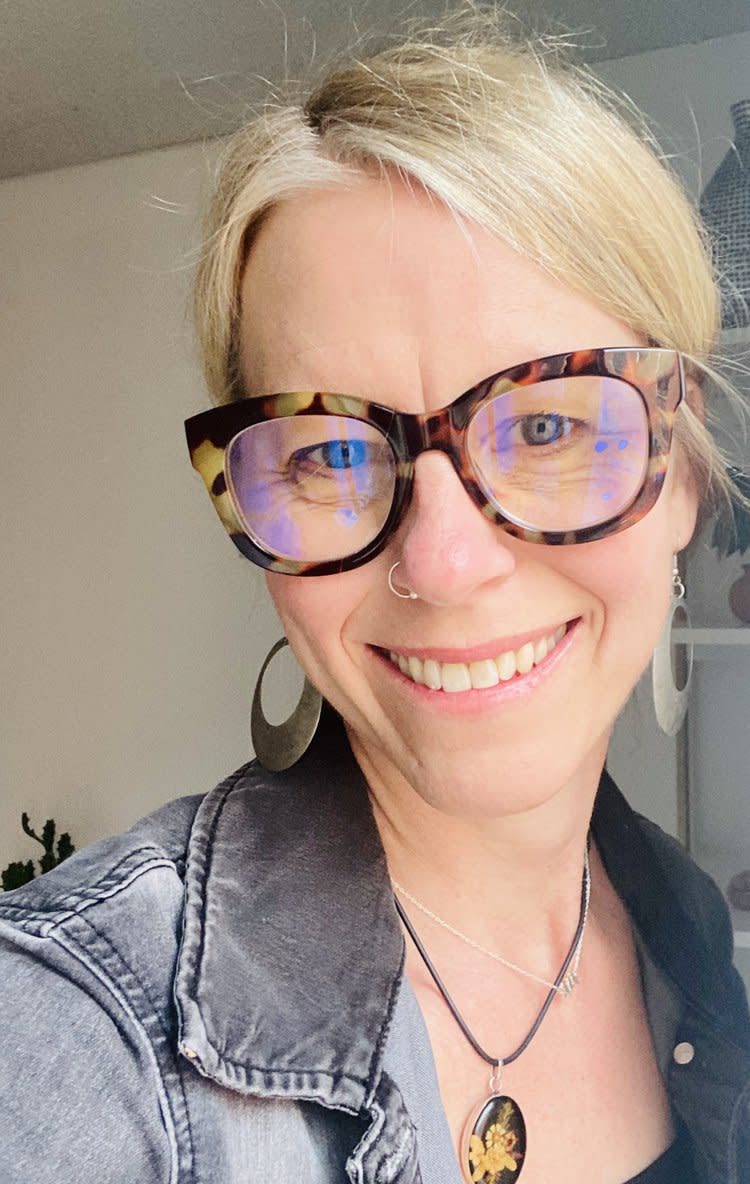
We recently sat down with Aris Moore, who will be part of our upcoming show The Familiars along with Haley Wood, to discuss her artistic practice, her inspiration and her teaching trajectory that led her to become a full time artist.
Abigail Ogilvy Gallery: How did you decide to become an artist and pursue it as a career path? When was the first moment you truly considered yourself an artist?
Aris Moore: I’m not sure I ever decided. I’ve just drawn everyday, for as long as I can remember. My career path after college was to be an art teacher, and I was for 21 years and then, because of some changes at my school I decided to leave teaching and began to spend more time on my work. I guess now that I am able to draw for hours each day I feel like an artist. Like for real. Like I was when I was little.
AOG: Where do you draw inspiration for your work? How would you describe the feelings your own work provokes in you?
AM: I think a search for connection and understanding inspires my work. When I was little I would draw pictures for my favorite grandmother after she passed. It was a way that I felt I could communicate with her when I was overwhelmed by her absence. Looking back, I realize that I saw art as some sort of magical way to connect. I think I still do. My work provokes in me all of the feelings, love, empathy, repulsion, humor, and acceptance.
AOG: Is there a significance between the drawings with a singular subject and the drawings with multiple figures?
AM: I think they are all ultimately alone. For me, the drawings with multiple figures often feel more lonely. I enjoy seeing how they will behave together. It’s really just who comes out to play.

Aris Moore, Lost and found, 2022. Pencil, colored pencil, marker and pen on paper. 8.5 x 10.5 in.
AOG: How has your work evolved and changed as you grew as an artist?
AM: I think it took me a while to move past art school and the idea of making “art”. I spent some years trying to figure out what kind of “art” I would make. All that while I was filling sketchbooks with figurative drawings that I had been drawing since I was a kid. It was a relief from making my “real work” which was a painful struggle to be serious and relevant. In grad school I escaped. My characters started to come out of my sketchbooks and onto large paper, it was such a relief. I think the climate in the art world changed and I think my life was too busy as a mother of twins and a full time teacher to do any sort of pretending. My work became a place to be real, to connect, to understand.
AOG: Can you explain the significance of scale in your work?
AM: Since Grad school I have embraced my love for drawing in sketchbooks. Before, I felt like they had to be preliminary to larger drawings that would come later. Back to that feeling that making art should be a painful struggle. I realized that when my characters came out of my sketchbooks and walked onto large paper they got stage fright (one of my mentors told me this and I’ve never forgotten it). So, for now, they are on small paper and that is a place that they can truly be themselves.
AOG: Your drawings represent the creativity and spontaneity of making art. How does your work as an art teacher contribute to your artistic practice and vice versa?

Aris Moore,Nurture and Control, 2022. Pencil, colored pencil, marker and pen on paper. 8.5 x 10.5 in
AM: First, I will say that teaching helped me grow as an artist as much if not more than my time in art school. Not only in terms of skill, but human understanding. I spent my days in a very real space with middle schoolers, a painful, awkward, raw and sometimes silly space. A difficult, yet exciting time when their internal world and external world start to clash, when their identity is simultaneously hidden and revealed, when they are at once child and adult. This space is at once, repulsive and beautiful, strong and vulnerable and familiar and strange.This space is where I live and draw.
AOG: And our favorite question - what advice do you have for artists just starting out?
AM: Play. Don’t worry about being relevant. You are relevant. Play more than you work, it’s harder than it sounds but when you get to that place you will find what is really yours. Making art doesn’t have to be a painful struggle to fit in with what is happening. It can be a painful struggle, not to fit in, but to get back to yourself. The way back I am fairly certain, is to play.
Add a comment